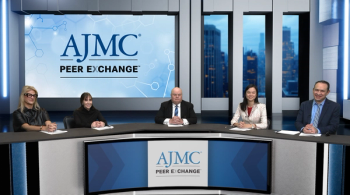
MD Treatment From a Managed Care Perspective
Panelists discuss how payers seek good return on investment when evaluating expensive gene therapies, creating potential friction when innovative treatments come at significant costs, requiring ongoing dialogue between manufacturers, patients, payers, and physicians to determine appropriate value and access.
Episodes in this series

Duchenne Muscular DystrophyTreatment From a Managed Care Perspective
The relationship between health care payers and innovative muscular dystrophy therapies presents complex challenges that require balancing multiple stakeholder perspectives. Payers fundamentally seek a good return on investment, wanting to see patient outcomes that align with the substantial costs they’re covering. From the patient perspective, there’s a natural desire for access to the most innovative and effective therapies available, regardless of cost considerations. This creates tension when the most cutting-edge and effective treatments are also the most expensive, leading to situations where significant therapeutic advances may face coverage barriers due to their high price points.
The disconnect becomes particularly pronounced when therapies provide modest improvements to patient quality of life but come with significant costs. In these scenarios, payers often exhibit increased resistance to coverage, creating friction in the approval process that can delay or prevent patient access to potentially beneficial treatments. This dynamic highlights the need for ongoing dialogue between all stakeholders to establish fair value assessments for these therapies. Unfortunately, such comprehensive discussions don’t always occur, leaving gaps in understanding between what different parties consider valuable or necessary for patient care.
Resolution of these coverage challenges requires collaborative dialogue involving all key stakeholders: manufacturers, patients, payers, and physicians. Each party brings essential perspectives to the value discussion, and their input is crucial for developing sustainable coverage policies. The hope is that as long-term data continue to emerge, gene therapies will demonstrate their value through sustained disease control, durability of effects, and meaningful improvements in activities of daily living. This evidence of long-term cost-effectiveness could help bridge the gap between providing access to high-cost therapies and demonstrating therapeutic benefits that justify the investment. Such data may facilitate more productive conversations between payers and providers about covering these transformative but expensive treatments, ultimately improving patient outcomes while providing hope for those affected by these devastating conditions.
Newsletter
Stay ahead of policy, cost, and value—subscribe to AJMC for expert insights at the intersection of clinical care and health economics.





























































